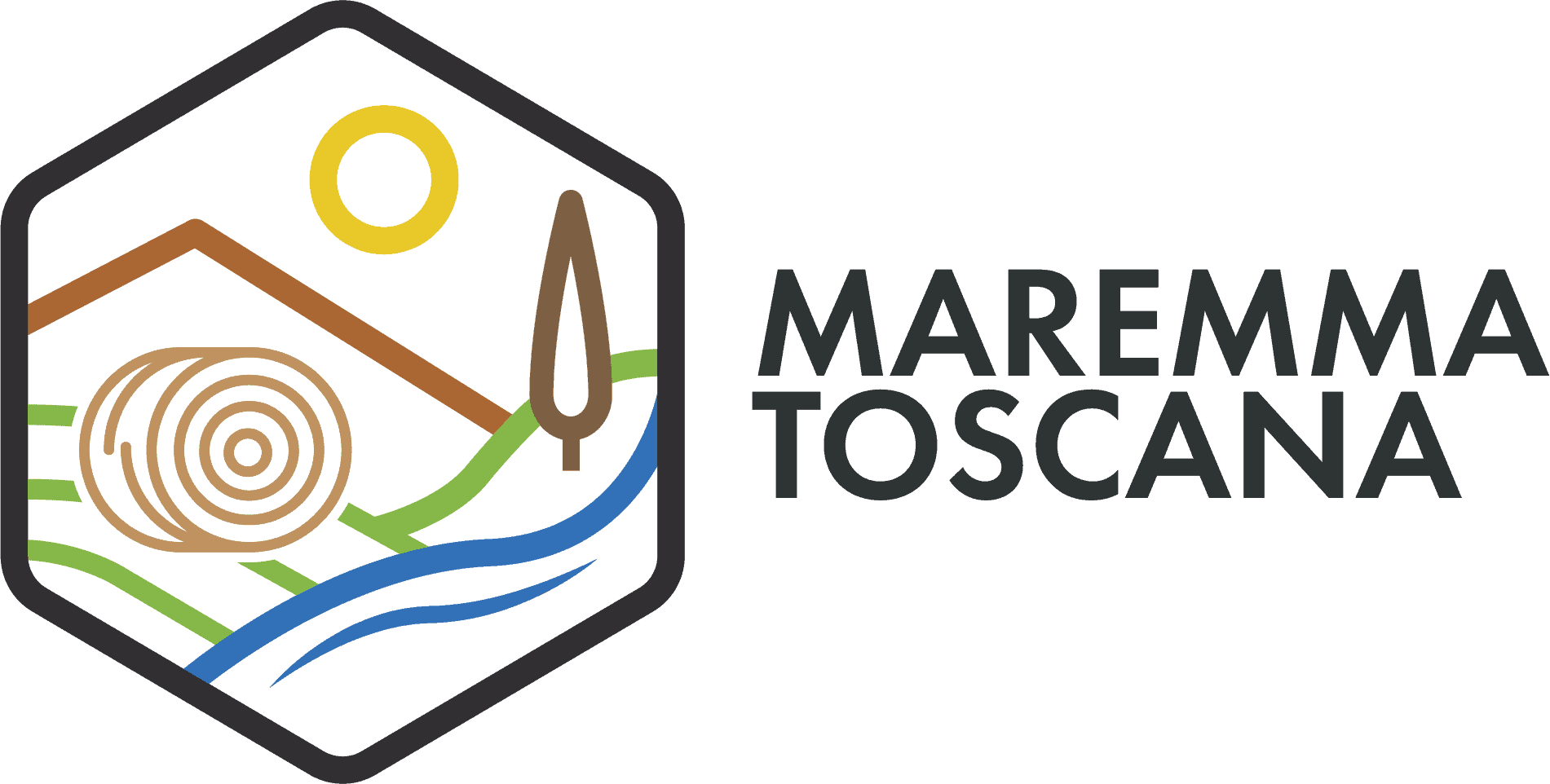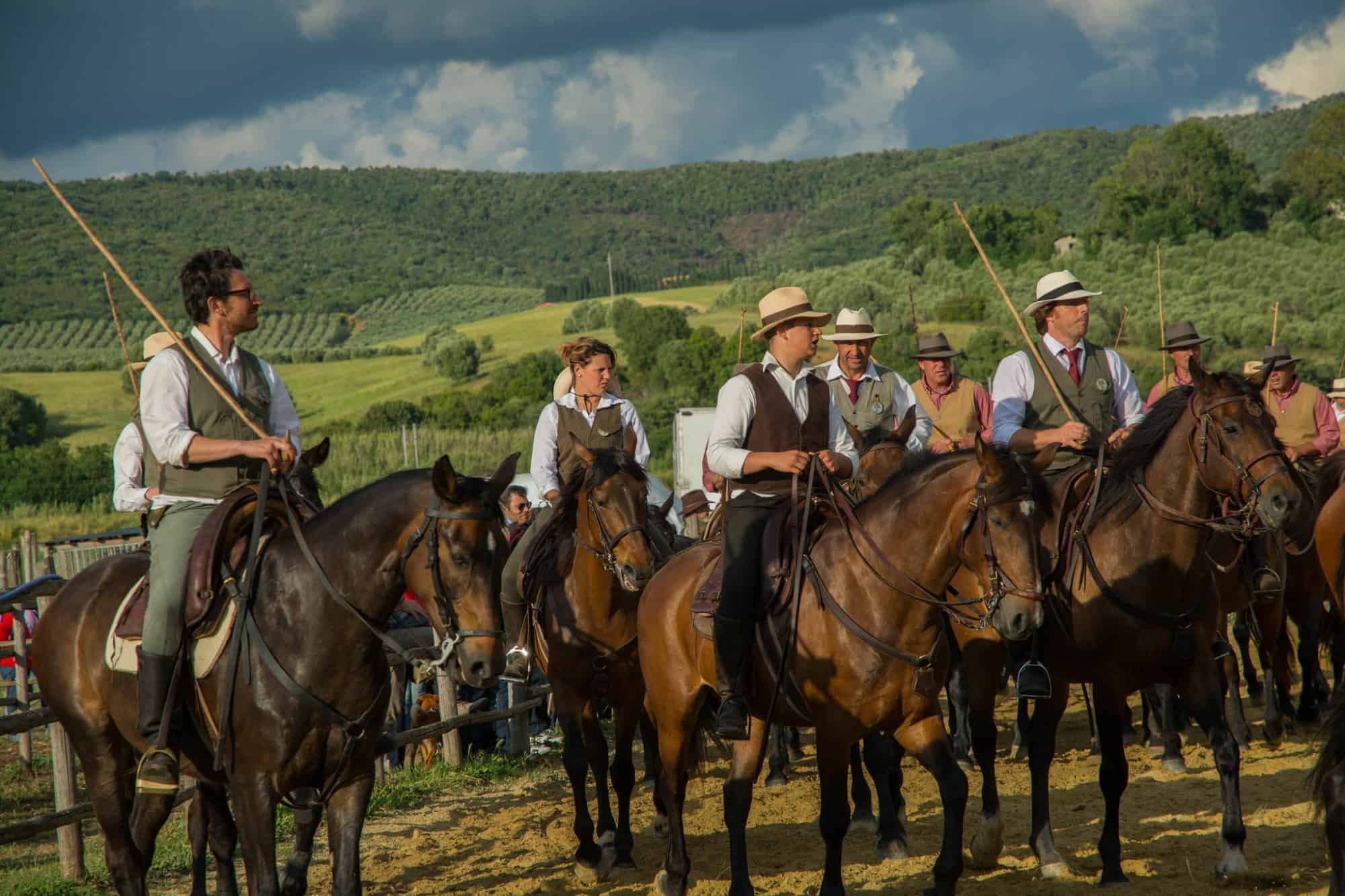HEIRS OF WILD DYNASTIES, THE BUTTERI OF THE MAREMMA, THE LAST WITNESSES OF A WORLD OF STRONG FLAVORS AND TRADITIONS, PROTAGONISTS OF CHALLENGES AND BALANCES IN THE VILLAGE CAROUSES AND OF HARD, CONTINUOUS, SOLITARY WORK, WITH THEIR ONLY TRUE COMPANIONS FOR LIFE: THE HORSES .
Ibutteri are the shepherds on horseback, the herdsmen, typical of the Tuscan and Lazio Maremma, whose day, especially in the past, was certainly not to be envied from a qualitative point of view. The butteri didn’t really know what fear was, but they knew the bush very well. They were not afraid of spending their lives in solitude and in the intricacies of the sweepstakes, riding the inseparable Maremmano horse breed, among the miasmas of the marshes, in the thickets populated by wild boars, exposed to the cold winter winds, or to the heat of the torrid summer days, surviving on poor peasant soups, of little compensation, very often exploited, and always being on horseback from dawn to dusk, in a land that appeared difficult, hostile, ungrateful, in what the songs of the past defined Bitter Maremma. The butteri, or bestiai, as they called each other, worked all day long, roamed the territories of the large Maremma estates, led the herds towards the herds, captured the beasts with snares, took charge of marking the cattle, scrounging the horses, to tame them. In the evening they all gathered together around the fire to eat polenta (or other poor Maremma dishes such as acquacotta) and organize themselves for the following day’s work.
THE BUTTERO IS A NAME THAT DERIVES FROM THE LATIN “BOUM-DUCTOR”, OX DRIVER OR FROM THE GREEK “BÙTEROS” WHERE “BUS” MEANS OX AND “TORÒS” MEANS GOAD.
The duties of the butteri were often also other: sometimes it was just a matter of supervising the animals in the pasture, or directing them towards better pastures, but in other cases (especially during the winter) they also had to provide food with a little fodder. the hungry herds. The pockmarks did not wear held by equestrian competitions: they wore rough trousers tucked into boots, pigskin or goatskin leg warmers, flannel smocks, fustian jackets with large pockets; they protected their heads, faces and eyes (from the lashes of brambles, pouring rain and dust) with large hats fitted with chinstraps. They kept the lasso hanging from the saddle, they held the bridle in a bunch with one hand and with the other they held a hooked stick, when they weren’t holding the shotgun. Their reputation as excellent and reckless knights, their silent, hard, solitary life, their presence for centuries in a land that in many respects is still wild, make the figure of the buttero the most authentic and irreplaceable symbol of the Tuscan and Lazio Maremma of yesterday and today.
The Butteri in the Maremma Regional Natural Park
Today the life of the butteri has remained almost unchanged over time, even if a lot has changed in their work. To see them at work just go to the Azienda Regionale Agricola of Alberese, which includes 40% of the surface area of the Maremma Regional Natural Park. Riding selected Maremma breed horses, the herdsmen take care of the herds of bulls and long-horned cows, which live freely here, on a daily basis. In the company, those who know how to ride horses can follow them as they carry out their morning work and observe their skilled gestures. The butteri use the hook, a dogwood stick ending in a hook with which they push and direct the herds, caress and shepherd the horses, open and close the cattle pens, pick up the hats from the ground without ever having to get off the saddle ( the traditional scafarda or bardella). Other interesting phases of the work can be observed such as the repair of fences and tools or the training of Maremma horses. The equestrian tradition is very strong in the Tuscan and Lazio Maremma – many farmhouses and equestrian centers organize riding courses for adults and children – and constitutes an indispensable element of the training of the butteri. In spring you can attend the famous market, the branding of the cattle and on August 15th there are shows (Alberese and Tolfa) in which the cowboys divided into teams compete with the lasso, demonstrating their equestrian skill and ability.
The Maremmani Butteri and Buffalo Bill's Wild West Show
There was a historical episode in which the date remains imprinted in the memory: March 8, 1890. Colonel William Cody, aka Buffalo Bill, hero of the West, came on tour to Rome with his equestrian circus “Wild West Show” to amaze the crowds. Indians, cowboys, infallible rifle and pistol shooters, Pony Express couriers and other characters from the epic of the West performed in the colonel’s shows. Duke Onorato Caetani of Sermoneta, a large owner of herds and half of the Maremma, saw the performance and launched a challenge to the Americans. William Cody and his cowboys agreed to compete with the cowboys of the Maremma in the taming of colts and buffaloes. The prize established was initially 1000 lire and was subsequently reduced by Colonel Cody to 500. The race was narrowly won by the Maremma cowboys and the protagonist of the challenge was Augusto Imperiali from Cisterna, who managed to ride an indomitable American horse, receiving thunderous applause from the large audience present. Buffalo Bill, enraged by the success of the Maremma cowboys, refused to accept defeat by contesting the performance and, taking down the tents of his circus the following day, left the Roman stage without paying anyone. Since then the skill of the Maremma cowboys has been famous throughout the world and the humble buttero Augusto Imperiali of the Agro Pontino (known as Augustarello) has become a legend, the hero of all butteri. The event was reported in the news pages of “Il Messaggero” at the time.


